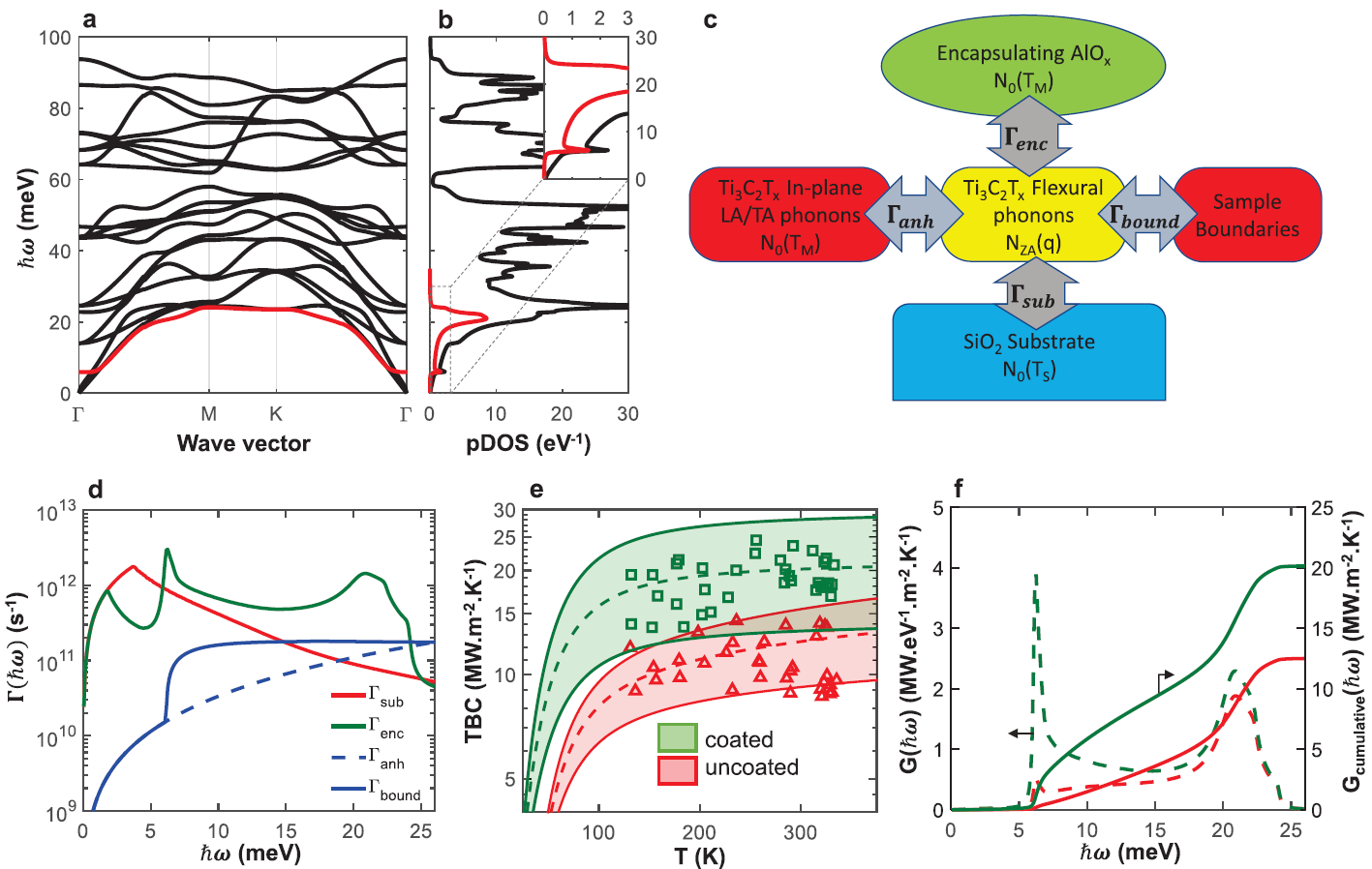In collaboration with the Salehi-Khojin group at UIC, we studied the effect of encapsulation on the thermal boundary conductance (TBC) between few-layer MXene (Ti3C2) and the substrate. Cameron’s first-principles simulations explain that encapsulating the MXene with amorphous AlOx nearly doubles the TBC to the substrate because the encapsulation dampens the long-wavelength flexural phonon modes that are responsible for most of the 2D-3D heat transfer. The work has been accepted for publication in the prestigious Advanced Materials (impact factor ~22): https://doi.org/10.1002/adma.201801629
In collaboration with the Salehi-Khojin group at UIC, we studied the effect of encapsulation on the thermal boundary conductance (TBC) between few-layer MXene (Ti3C2) and the substrate. Cameron’s first-principles simulations explain that encapsulating the MXene with amorphous AlOx nearly doubles the TBC to the substrate because the encapsulation dampens the long-wavelength flexural phonon modes that are responsible for most of the 2D-3D heat transfer. The work has been accepted for publication in the prestigious Advanced Materials (impact factor ~22): https://doi.org/10.1002/adma.201801629

